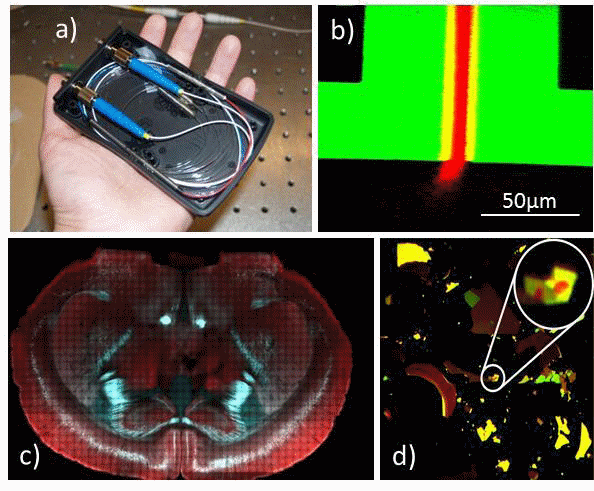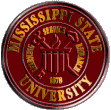 |
Department of Physics & Astronomy Colloquia
Hilbun 150, 125 Hilbun Hall, Mississippi State University
Mondays at 3:30 PM
2016-2017 Program
NB: Unless noted otherwise, Physics Colloquia are held as mentioned above.
-
- April 3, 2017
 Dr. Sait Umar, Department of Physics and Astronomy, Vanderbilt University
Dr. Sait Umar, Department of Physics and Astronomy, Vanderbilt University
- Nuclear Dynamics From Neutron Stars to Superheavy Elements
- Host: Dr. Anatoli Afanasjev
- Abstract:
-
Radioactive Ion Beam Facilities have opened up new opportunities in the areas of nuclear structure physics, nucleosynthesis, nuclear astrophysics, and tests of fundamental symmetry principles. These experimental developments have sparked renewed interest in quantum theories of many-body systems capable of addressing large amplitude phenomena observed in low-energy nuclear reactions.
It is generally acknowledged that the Time-Dependent Hartree-Fock (TDHF) theory provides a unified fully microscopic description of nuclear dynamics, and is closely related to time-dependent density functional theory (TDDFT). In recent years, aided by advances in computational tools and methods as well as improvements achieved in obtaining better effective interactions, TDDFT has emerged as a powerful tool to provide a microscopic description of low-energy heavy-ion reactions. These calculations can now be done without making any simplfying assumptions about the effective interactions and the reaction geometry and with unprecedented numerical accuracy. More importantly, new techniques allow us to extract more information that can be directly compared with experiment.
In this talk I will review some of the recent advances in TDDFT calculations for the study of reaction phenomena ranging from light systems important for astrophysics to very heavy systems. These include, the microscopic calculation of fusion barriers and cross-sections, dynamics of quasifission, and deep-inelastic collisions.
|
-
- March 20, 2017
 Dr. Jane Pratt, Astrophysics Group, University of Exeter
Dr. Jane Pratt, Astrophysics Group, University of Exeter
- Computing Plasma Dynamics: from the Laboratory to the Stars
- Host: Dr. Angelle Tanner
- Abstract:
-
Understanding the collective dynamics of plasmas is key for achieving fusion energy and predicting solar activity. In plasmas, magnetic instabilities interact with turbulence and convection in fundamental and surprising ways. In the context of my own research I discuss these basic phenomena in fusion reactors and in stars. I explore how heating and current influence the growth of magnetic islands formed by magnetic reconnection, and discuss implications for fusion reactor operation. Through a mechanism known as the dynamo, the movement of plasma in a turbulent convection zone deep within a star builds and maintains magnetic fields. I present a large-scale computational study of mixing due to turbulent convection in a realistic stellar model. Using extreme value statistics of convective penetration, this study predicts a new diffusion coefficient, targeted toward developing a new generation of stellar evolution calculations.
|
-
- March 6, 2017
 Dr. Anthony Kuchera, Department of Physics, Davidson College
Dr. Anthony Kuchera, Department of Physics, Davidson College
- The Limits of Existence: What We Can Learn from the Most Neutron-rich Nuclei
- Host: Dr. Jeffry A. Winger
- Abstract:
-
As isotopes of an element move away from stability and become less bound, drastic changes in nuclear structure emerge. The most neutron-rich nuclei can only be formed as a resonance as even their ground states are unbound to neutron-emission. To study these exotic nuclei, invariant mass spectroscopy is used by measuring the momentum of all outgoing particles. With this information the decay energies are calculated and energy levels are determined. The Modular Neutron Array and Large multi-Institutional Scintillator Array (MoNA-LISA) at the National Superconducting Cyclotron Laboratory were built to detect neutrons from the decay of nuclei at the limits of nuclear existence. These measurements can provide some of the most stringent tests of modern nuclear structure theory. Recent MoNA-LISA results and future plans will be presented.
|
-
- March 2*, 2017
 Dr. Benjamin P. Crider, National Superconducting Cyclotron Laboratory, Michigan State University
Dr. Benjamin P. Crider, National Superconducting Cyclotron Laboratory, Michigan State University
- Nuclear Shapes at the Limits of Stability
- Host: Dr. Jeffry A. Winger
- Abstract:
-
The study of atomic nuclei, which are composed of protons and neutrons, is focused on understanding some of the universe’s most basic building blocks and the forces that hold them together. In particular, nuclear physics seeks to address the question, ”How does subatomic matter organize itself and what phenomena emerge?” One phenomenon that occurs is the bunching of single-particle orbitals to form ”shells.” Nuclei having filled shells are exceptionally stable relative to neighboring nuclei and are observed to have spherical shapes. However, in certain regions of the nuclear chart, a single nucleus can exhibit multiple shapes. Understanding the components of this shape coexistence is important for connecting many ideas within the field, as shape coexistence lies at the intersection of single-particle (promotion of individual nucleons across shells) and collective nuclear behaviors. Recently, shape coexistence has emerged as a feature that perhaps exists in all nuclei rather than an isolated rarity in some nuclei. Nuclear shape coexistence will be presented in terms of its history, current studies on specific nuclei near performed at the National Superconducting Cyclotron Laboratory, and prospectives for future studies at the Facility for Rare Isotope Beams (FRIB) that is currently under construction.
* Note the special colloqium day, Thursday!
|
-
- Feb. 27, 2017
 Dr. Alexander Bataller, Department of Physics, North Carolina State University
Dr. Alexander Bataller, Department of Physics, North Carolina State University
- Dense Plasma Condensation: From “White Dwarf in a Jar” to 2D Quantum Liquid
- Host: Dr. Chuji Wang
- Abstract:
-
A system of charged particles brought to low temperature and high density will experience strong interparticle coupling, eventually forming liquid, and even solid condensation. The generality of this dense plasma condensation (DPC) offers a wide variety of manifestations in both natural and laboratory systems. DPCs encompass a rich parameter space whose physical description exists at the overlap of condensed matter and plasma physics, where classical and quantum phase transitions are possible. In this presentation I will present several examples of
DPCs whose scale ranges from planet-sized white dwarfs to atomically thin monolayer semiconductors. Although many systems that are driven far off-equilibrium will gravitate toward DPC formation, much of their fundamental properties remain unknown. However, recent advances in ultrafast laser technology and materials of reduced dimensionality have created a unique opportunity to generate and study DPCs at room temperature and in small laboratory settings; thus paving the way for new applications such as next generation photolithographic sources and even plasma shields for blocking high-power laser attacks.
|
-
- Nov. 7, 2016
 Dr. Allen W. Bryan, School of Medicine, University of Alabama at Birmingham
Dr. Allen W. Bryan, School of Medicine, University of Alabama at Birmingham
- From Hilbun to Hospitals: Biophysics Applications in Research and Clinical Laboratories.
- Host: Dr. Jeffry A. Winger
- Abstract:
-
This talk will cover two topics from different parts of my career that would be of interest to both physics and biology:
1) Computational modeling of biophysics, as used in my PhD work on prion/amyloid disease;
2) Use of biophysics in the clinical laboratory instrumentation I work with and oversee, such as:
a. mass spectrometry – MALDI-TOF for microbial identification and high-resolution chromatographic-ionization for toxicology,
b. flow cytometry and its use of optics, visual spectroscopy, and hydrodynamics;
c. and the Coulter principle of electrostatic flow, used for counting red blood cells.
|
-
- Sept. 12, 2016
 Dr. Khanh Kieu, College of Optical Sciences, University of Arizona
Dr. Khanh Kieu, College of Optical Sciences, University of Arizona
- Compact Ultrafast Fiber Lasers for Nonlinear Optical Microscopy
- Host: Dr. Ariunbold Gombojav
- Abstract:
-
Mode-locked lasers which generate femtosecond or picosecond pulses are important tools in modern scientific research and technological applications. These lasers are notorious for their high cost, bulkiness, and complexity in day-to-day operation. It is now possible to build very compact, low cost, and reliable femtosecond lasers working in a wide range of wavelengths with the use optical fiber technology. I will review the latest ultrafast fiber laser systems that we have developed in our research group. The emphasis will be put not only on the excellent performance of the developed lasers but also on their commercialization path where long term operation and stability are crucial. I will also discuss the latest results that we have been able to achieve through the use of the laser systems that we have developed. In particular, I will discuss the application of these lasers in multiphoton microscopy of 2-dimensional layered materials (graphene, ), photonic devices as well as biological tissues.

a) A photograph of a compact mode-locked fiber laser with CNT SA; b) Second harmonic (red) and third harmonic (green) image of a polymer-based phase modulator; c) Multiphoton image of a mouse brain section; d) Multiphoton image of graphene flakes on a silicon substrate.
|
Click here for 2015-2016 season
2016-2017 Committee
Lamiaa El Fassi (Chair) (325-0627, le334@msstate.edu email)
Jinwu Ye (325-2926, jy306@msstate.edu email)
Ariunbold Gombojav (325-2927, ag2372@msstate.edu email)
Gautam Rupak (325-9451, gr145@msstate.edu email)
Secretary: Susan Galloway (325-2806, srg133@msstate.edu email)
Back to Dr. El Fassi's Page
|
![[MSU Physics Logo]](http://le334.physics.msstate.edu/files/Satellite.jpg)

![[MSU Physics Logo]](http://le334.physics.msstate.edu/files/Satellite.jpg)
